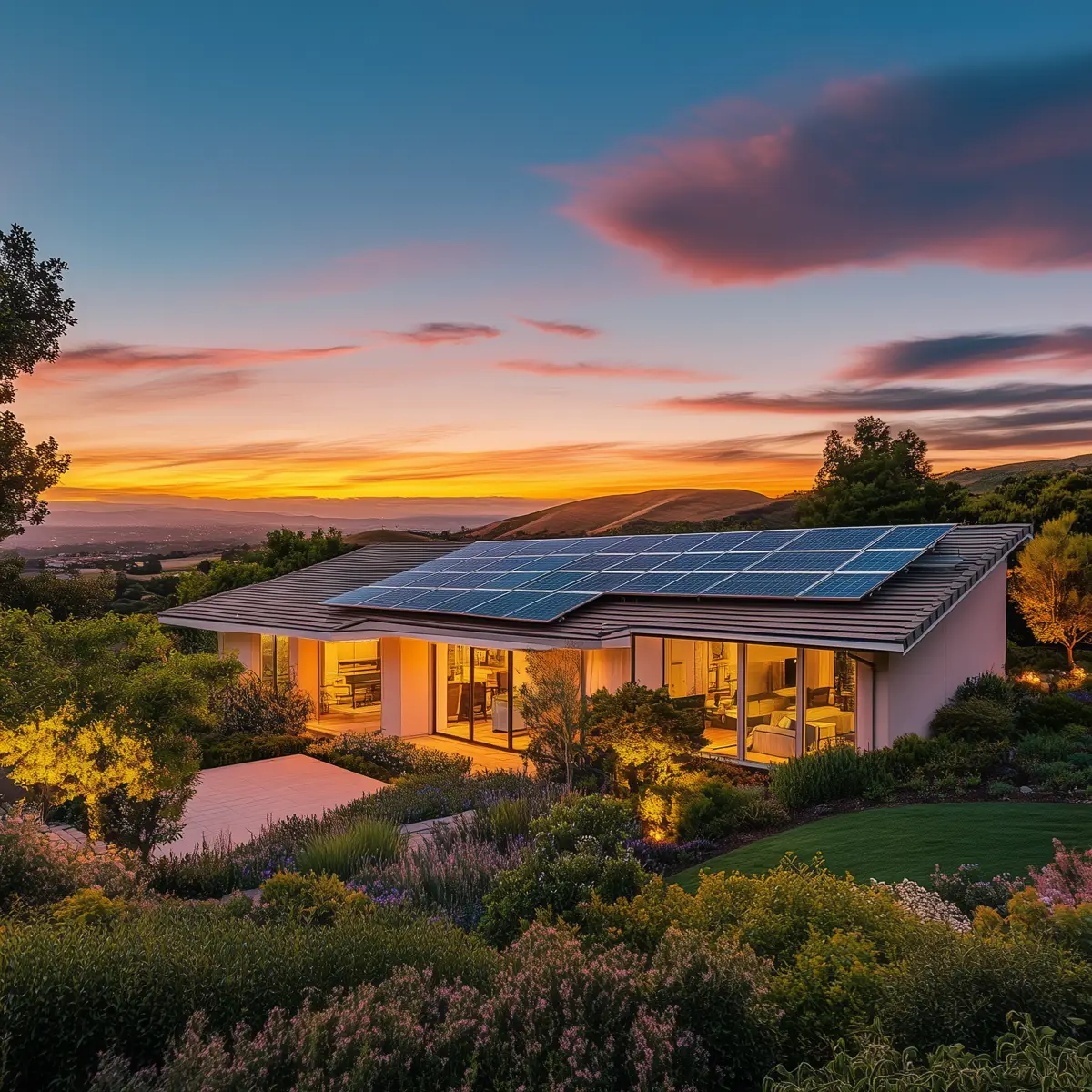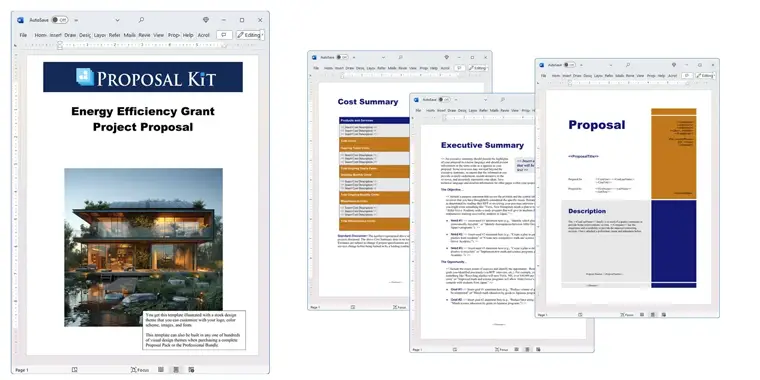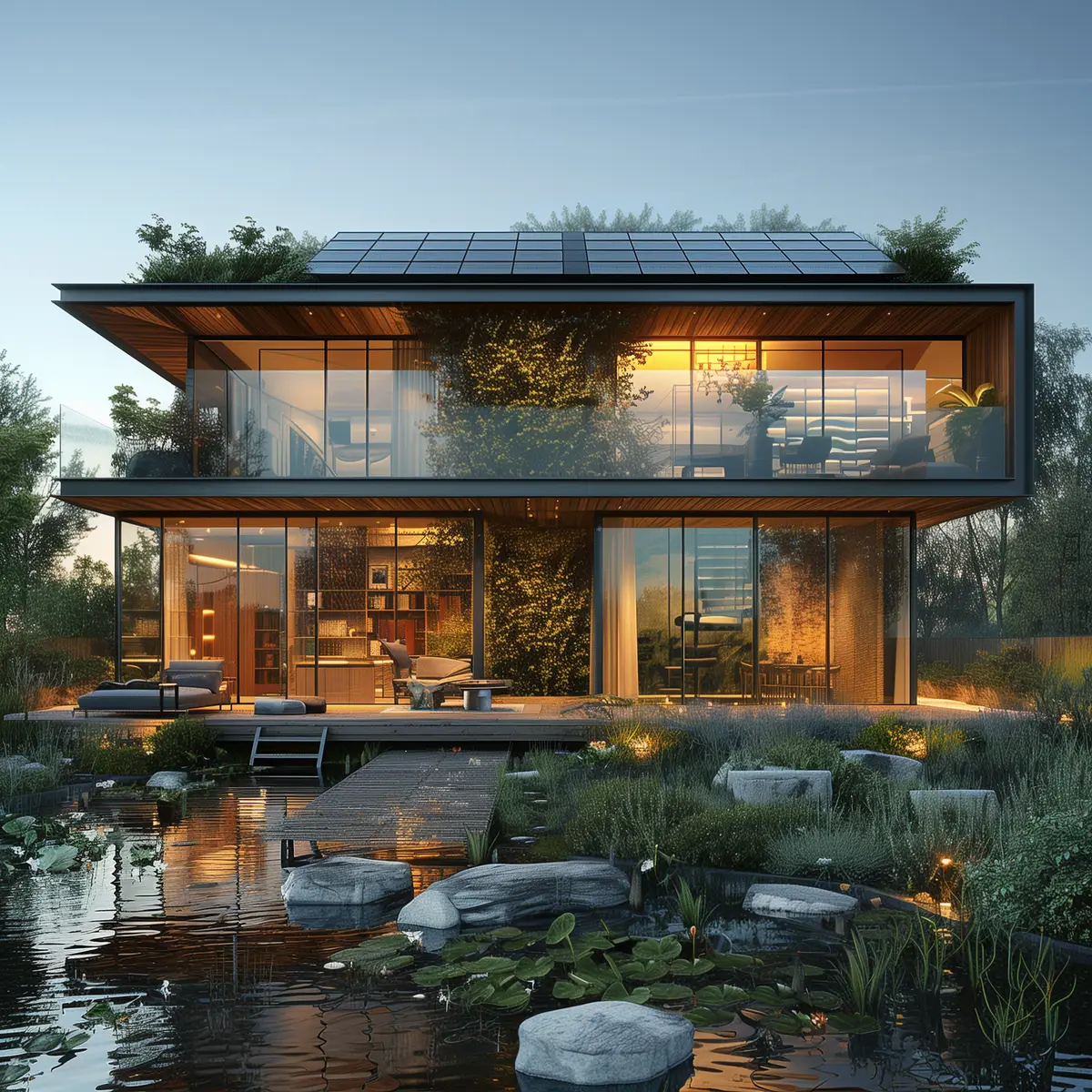How to write your Energy Efficiency Grant Project Proposal
We include this 31 page layout with every Proposal Pack. If you want this template to have a different visual design theme than the one illustrated here, purchase any Proposal Pack design and create this template using the purchased design theme. This template is included in every Proposal Pack. If you get a Proposal Pack or the Professional Bundle, you can also make any variation of this template with different chapters to suit your needs.
We typically include more chapters in the templates than most people will need to give everyone more variety in the chapters they may need. You can trim down a long template by removing pages you do not need or combining multiple chapter topics into one page.
 DOWNLOADABLE, ONE-TIME COST, NO SUBSCRIPTION FEES
DOWNLOADABLE, ONE-TIME COST, NO SUBSCRIPTION FEES If you need this template on DVD media order from our Amazon shop.
If you need this template on DVD media order from our Amazon shop.
You can also create countless variations of this document to suit your needs using the included library of 2200+ chapters if ordering a Proposal Pack or Pro Bundle.
 What Our Clients Say
What Our Clients SayI found Proposal Kit a little over two years ago when I needed to create a very extensive proposal for a project. I struggled with integration of Proposal Kit into my word processor, however, I was able to manage to use the sample proposal content and to incorporate it into my proposal. I was able to create an amazing proposal that I felt very confident about."
Related Article
Related Video
Related Templates
- Office Renovation Proposal
- Civil Engineering Construction Project Proposal
- Solar Power System Sales and Installation Proposal
- Home Construction Proposal
- Retrofit Project Proposal
- Commercial LED Lighting Product Sales Proposal
- 3D Printed Building Construction Proposal
- Environmental Program Proposal
- Solar Power System Grid and Storage Proposal
- Energy Efficiency Proposal
- Sustainable Energy Production Facility Proposal
- Biogas Project Proposal
- Smart Grid Pilot Project Proposal
- Sustainable Power for Eco Resort Proposal
- Grant Funding Request Proposal
What's the Best Way to Write Your Energy Efficiency Grant Project Proposal?
When writing an energy efficiency grant proposal, a proven approach is to use the Proposal Kit template and software package. This powerful tool simplifies the proposal creation process, ensuring your document is comprehensive and professionally structured. Proposal Kit's templates and Wizard software program guide users step-by-step, incorporating a line item quoting database system for detailed financial planning, such as cost summaries, quotes, estimates, budgets, and other fiscal considerations.
Grants are typically written to match RFP guidelines, which means you must be able to tailor the proposal outline to match the RFP instructions. Proposal Kit's template library and software give you this ability.
Are you in a position where you need to draft an energy efficiency grant proposal? If so, Proposal Kit can provide you with all the necessary tools and guidance.
What Types of Projects Are Energy Efficiency Grant Proposals Written For?
Energy efficiency projects are crucial in an environmentally conscious world. Here are ten examples of projects for energy efficiency grant proposals:
- Solar Panel Installations: Upgrading buildings with solar technology to reduce reliance on non-renewable energy sources.
- Green Initiatives: Building using green sustainable practices.
- LED Lighting Retrofits: Replacing traditional lighting with energy-efficient LED systems to lower energy consumption.
- HVAC System Upgrades: Enhancing heating, ventilation, and air conditioning systems to improve energy efficiency.
- Building Insulation: Improving insulation in walls, roofs, and floors to reduce heating and cooling demands.
- Energy Management Systems: Implementing advanced systems for monitoring and managing energy use effectively.
- Window and Door Enhancements: Installing energy-efficient windows and doors to reduce energy leakage.
- Water Conservation Systems: Introducing low-flow fixtures and water recycling systems to decrease water and heating costs.
- Green Roofing: Creating green roofs that provide insulation and reduce the urban heat island effect.
- Smart Meter Installation: Smart meters provide real-time data on energy consumption to optimize energy use.
- Educational Programs and Workshops: Educating the community about energy conservation and efficient practices.
Chapters this template is built with
Using the Proposal Kit, you can build your grant proposal with the following essential chapters, each specifically tailored to cover every facet of your project. You can start with this list and modify the chapter layout to fit your grant guidelines.
Each of these chapters can be tailored using Proposal Kit's templates to reflect the specific needs and objectives of your energy efficiency grant project, ensuring a professional and persuasive proposal.
The chapters listed are just a selection from the thousands available in the Proposal Kit's extensive library, which can be customized to cover all aspects of your project proposal.
Cover Letter
The cover letter is the gateway to your proposal, providing a concise introduction to your organization and a summary of the grant project. Address this letter to specific funders, detailing the significance of the project and your request for their support. Highlight the alignment of the project's goals with the funder's mission, emphasizing the mutual benefits of their investment.
Executive Summary
The executive summary acts as a snapshot of the entire proposal. Summarize the primary objectives of the energy efficiency project, the expected outcomes, and the overarching impact on the community and environment. This section should captivate the reader's interest and provide compelling reasons why the project deserves funding.
Benefits
In the Benefits chapter, elaborate on the dual advantages of the project-environmental and economic. Discuss how the project will reduce energy consumption and carbon emissions, promote sustainable practices, and result in community cost savings or economic growth.
Milestones
Detail the critical milestones of the project, from initiation to completion. Provide specific dates for each primary phase, such as the completion of installation or the achievement of specific reduction targets. This helps funders visualize the project timeline and understand the pacing of the project deliverables.
Implementation Plan
Outline a clear, step-by-step plan for achieving the project goals. This plan should include phases of assessment, procurement, execution, and review. Describe the resources and activities needed at each stage to move the project towards successful completion.
Design
Describe the technical specifications and innovative design aspects of the energy efficiency project. Include diagrams, blueprints, or models to help visualize the proposed modifications or installations, such as new HVAC systems or solar panels.
Strategy
Articulate the approach to ensure the project's success, which may involve stakeholder engagement, marketing strategies, and partnerships with other organizations. Detail how each strategy will contribute to achieving the project's objectives.
Records Management
Explain the methods and systems used for documentation and data management throughout the project. This includes tracking financial transactions, project progress, and environmental impact measures.
Methodology
Define the technical or scientific methods that will be used to implement the project. These could include assessing current energy usage, techniques for installing new systems, and procedures for measuring energy savings.
Service Area
Specify the geographical area and the community that will benefit from the project. Describe the demographic and socioeconomic characteristics of the area to illustrate why it is a suitable candidate for the energy efficiency initiative.
Implementation Schedule
Present a detailed timeline for the various phases of the project. This schedule should align with the milestones and provide a weekly or monthly breakdown of activities, helping funders understand the project flow.
Reporting
Set up clear procedures for reporting progress to stakeholders and funders. Include the formats and frequency of these reports, which should provide transparency and accountability for the project's progression.
Environmental Impact
Assess the project's potential environmental impacts, both positive and negative, and discuss the mitigation strategies for any adverse effects. Highlight how the project contributes to broader ecological goals like reduced greenhouse gas emissions.
Schedule of Events
List all events related to the project, such as community meetings, informational workshops, and public hearings. These events are crucial for community engagement and support.
Sources
Cite all the data sources and research that support the claims and projections made in the proposal. This adds credibility to your proposal and provides a solid foundation for your project's goals and expected outcomes.
Eco-Friendly
Ensure that all aspects of the project adhere to environmental sustainability principles. Discuss using sustainable materials, waste reduction practices, and long-term environmental benefits.
Evaluation
Discuss the methods for evaluating the project's success after implementation. Include qualitative and quantitative evaluation metrics, such as energy savings, ROI, community awareness, and behavior improvements.
Efficiency
Demonstrate how the project maximizes the use of resources to achieve the highest possible energy savings. Discuss the choice of technology and processes regarding energy efficiency and operational performance.
Budget
Provide a detailed financial plan, including all expected costs and funding sources. Break down the budget into labor, materials, equipment, and administrative expenses, and align these with the funding requests.
Cost Effectiveness
Analyze the economic benefits of the project relative to its costs. This analysis should persuade funders of the project's value for money, highlighting the payback period and the net savings over time.
Return on Investment
Calculate the expected returns on investment for funders, considering both financial returns and intangible benefits such as enhanced community goodwill and environmental improvements.
Contract and Terms
Outline the contractual terms and conditions associated with the project. Include clauses about payment schedules, project deliverables, and all parties obligations.
Qualifications
Describe your team's qualifications, expertise, and experience relevant to executing the project. Highlight past successful projects and the specialized skills that will contribute to this project's success.
Related Projects
Provide examples of similar projects previously undertaken by your organization. This section builds confidence in your ability to deliver the proposed project based on a proven track record.
Compliance Matrix
Create a compliance matrix to ensure that the proposal meets all grant requirements. This matrix matches your proposal's elements to the specific demands of the grant RFP, ensuring everything is noticed.
RFP Cross Reference
Link elements of your proposal directly to the sections and requirements of the RFP. This makes it easy for reviewers to see how your proposal comprehensively addresses each aspect of the RFP.
Bid / No-Bid Checklist
Use this checklist to help decide whether to proceed with the proposal submission based on alignment with organizational goals, likelihood of winning, and resource availability.
Grant Proposal Development Checklist
Ensure all proposal components are complete and ready for submission. This checklist is a final review to confirm that every required detail is addressed and polished.
Use cases for this template
Marcus's Approach: Small Business Owner
Marcus, the founder of Eco-Solutions Inc., had a project to transform an old building into a model of energy efficiency. Understanding the importance of securing funding, Marcus turned to Proposal Kit to create a proposal that would not only highlight the environmental impact but also the economic benefits of his green building project.
Using the Proposal Kit, he outlined how the project would use modern eco-friendly technologies such as solar panels, intelligent energy systems, and sustainable materials. He detailed the reduction in energy consumption and the long-term savings on utility bills, presenting a solid case for a high return on investment.
His proposal also included testimonials from previous clients and case studies of similar successful projects, enhancing its credibility. This presentation captured the interest of several prominent investors and a local government grant, securing the necessary funding to kickstart the project.
Lisa's Deadline Achievement: Corporate Responsibility
Lisa, a project manager at GreenTech Innovations, was faced with a deadline to submit a proposal for a high-profile energy efficiency upgrade project. With the clock ticking, she leveraged Proposal Kit's power and advanced AI tools to streamline the proposal development process. The AI tools were instrumental in analyzing extensive data from previous projects, extracting relevant information, and integrating them into her current proposal.
Lisa used the Proposal Kit's structured templates to organize the information effectively, ensuring that every section, from the executive summary to the detailed budget, aligned with the grant's RFP requirements. Her ability to combine AI technology with the robust features of the Proposal Kit resulted in a comprehensive, well-documented proposal that addressed all the funder's concerns.
The submission was on time and stood out for its clarity and precision. It led to the approval of the project funding and earned high praise from her senior management, reinforcing her reputation as a capable and resourceful project manager.
Theo's Non-Profit Vision: RFP Drafting Mastery
Theo, the director at Renewable Resources Non-Profit, faced the task of drafting an RFP for a vital energy conservation project that aimed to make environmental impacts across multiple communities. Knowing the complexity of the process and the need for absolute clarity to attract the right contractors, Theo relied on Proposal Kit's comprehensive resources.
He created an RFP that was thorough and clear, detailing every requirement and expectation in a manner that was easy to understand yet detailed enough to eliminate any ambiguities. He used checklists and compliance matrices from the Proposal Kit to ensure no critical element was overlooked and that the RFP aligned perfectly with the project's long-term goals.
His well-structured RFP facilitated a smooth and transparent bidding process, attracting bids from several qualified contractors aligned with the project's mission. Theo's effective use of the Proposal Kit streamlined the procurement process and set the stage for successful project implementation, furthering the non-profit's mission to promote sustainable energy solutions.
Conclusions and Recommendations
From drafting detailed financial plans to outlining comprehensive project strategies, the Proposal Kit is an invaluable tool for anyone writing an energy efficiency grant proposal. An effective energy efficiency grant project proposal is your gateway to advancing sustainable practices and making an impact through your initiatives.
Also Known As
This template may also be referred to in different ways or be used in more specialized situations, such as:
- Proposal for Energy Efficiency Grant Funding
- Energy Efficiency Project Grant Application
- Grant Proposal for Energy Conservation Project
- Energy Efficiency Initiative Grant Request
- Proposal for Securing Energy Efficiency Grant
- Energy Saving Grant Project Proposal
- Application for Energy Efficiency Grant Support
- Energy Optimization Grant Proposal
- Sustainable Energy Grant Project Application
- Energy Efficiency Improvement Grant Request
Abstract
 Creating an energy efficiency grant proposal is important for those working towards a sustainable future. The project aims to secure funding by presenting a comprehensive and compelling case to potential donors. Grant writing plays an important role in this process, and using Proposal Kit can simplify the task.
Creating an energy efficiency grant proposal is important for those working towards a sustainable future. The project aims to secure funding by presenting a comprehensive and compelling case to potential donors. Grant writing plays an important role in this process, and using Proposal Kit can simplify the task.
These tools guide users through each step, from developing financial plans to creating persuasive narratives. Engaging with industry experts during training sessions can enhance the proposal's effectiveness by incorporating valuable knowledge. Collaborating with partners helps address challenges and ensures the project is beneficial in the long run. Investing time and resources into creating a detailed proposal is vital for a successful transition to energy-efficient practices. By focusing on both environmental and economic outcomes, a well-prepared proposal can significantly contribute to a sustainable future.
Expanding on this, the process of creating an energy efficiency grant proposal involves several key topics. Collaborating with industry experts and dedicated partners enriches the proposal by infusing it with expert knowledge and innovative solutions. Teams learn to navigate the complexities of grant writing, ensuring their proposals meet the specific requirements outlined in RFPs.
 This approach not only addresses immediate challenges but also lays the groundwork for future projects. The proposal development process is an investment that attracts donors by showcasing the project's potential for long-term community and environmental benefits. By thoughtfully outlining energy-saving measures and potential returns on investment, the proposal demonstrates its alignment with a sustainable future, making it an attractive candidate for funding and support.
This approach not only addresses immediate challenges but also lays the groundwork for future projects. The proposal development process is an investment that attracts donors by showcasing the project's potential for long-term community and environmental benefits. By thoughtfully outlining energy-saving measures and potential returns on investment, the proposal demonstrates its alignment with a sustainable future, making it an attractive candidate for funding and support.
Creating an energy efficiency grant proposal requires a meticulous approach to secure the necessary support from donors and stakeholders. The project aims to foster a sustainable future by clearly demonstrating its long-term benefits and alignment with ecological goals. Grant writing is a complex task that involves understanding and addressing the unique requirements of each funding opportunity.
In this context, training sessions play an important role in equipping teams with the skills needed to navigate the intricacies of proposal development. These sessions often involve collaboration with industry experts who provide insights into the latest energy-saving technologies and trends.
 As proposals are developed, they must address potential challenges and outline strategies for overcoming them. A successful proposal articulates a clear plan for how the project will make the transition to more energy-efficient practices and highlights the beneficial impacts on the community and environment. By investing in these initiatives, organizations can demonstrate their commitment to promoting sustainable energy solutions and contribute to the life of the communities they serve.
As proposals are developed, they must address potential challenges and outline strategies for overcoming them. A successful proposal articulates a clear plan for how the project will make the transition to more energy-efficient practices and highlights the beneficial impacts on the community and environment. By investing in these initiatives, organizations can demonstrate their commitment to promoting sustainable energy solutions and contribute to the life of the communities they serve.
A well-structured proposal showcases an organization's ability to partner with other stakeholders, ensuring a comprehensive and coordinated effort toward achieving project goals. This partnership approach not only enhances the proposal's credibility but also strengthens its potential for success in the long run. By focusing on both immediate and future benefits, an energy efficiency grant proposal underscores the importance of investing in projects that pave the way for a more sustainable and energy-conscious future.
Frequently Asked Questions
What should be included in an energy efficiency grant project proposal?
An energy efficiency grant project proposal should include the following: an engaging cover letter, an executive summary, a detailed project description, specific objectives and goals, a comprehensive budget, a timeline for project implementation, the expected benefits and outcomes, and contact information. Using structured templates from Proposal Kit can further assist in ensuring all critical components are covered.
How can I demonstrate the need for the grant in my proposal?
To demonstrate the need for the grant, provide detailed data on current energy consumption and the inefficiencies present. This is a crucial step as it helps the grantor understand the urgency and importance of your proposal. Highlight the potential environmental and financial impacts of implementing the proposed energy efficiency measures. Include case studies, testimonials, and comparisons with similar successful projects. Clearly articulate the gap between current performance and potential improvements, and explain how the grant will bridge this gap.
What are some mistakes to avoid when writing an energy efficiency grant project proposal?
Common mistakes include failing to tailor the proposal to the requirements of the grant. To avoid this, carefully review the grant's guidelines and criteria, and ensure that your proposal addresses each requirement. Not clearly defining the project's goals and outcomes, using overly technical language that may not be accessible to all readers, and submitting a proposal with errors or poor formatting are also common pitfalls. Ensure that your proposal is clear, concise, and aligned with the grant's objectives. Using Proposal Kit's templates can help you avoid these pitfalls and present a polished proposal.
How can I make my energy efficiency grant project proposal stand out?
To make your proposal stand out, emphasize the unique aspects of your project and its potential impact. Use data such as energy consumption trends, cost savings projections, and environmental impact assessments to illustrate the benefits of the proposed measures. Visuals like charts, graphs, and images can also make the data more engaging and understandable. Highlight any innovative technologies or approaches you plan to use, and provide a clear and realistic budget and timeline. To demonstrate your project's alignment with the grant's priorities and objectives, consider including comparisons with similar successful projects, showing how your project builds on their successes or addresses their shortcomings. A well-organized and visually appealing design will also help capture the grantor's attention.
How can I use Proposal Kit to create an effective energy efficiency grant project proposal?
Proposal Kit provides a comprehensive library of templates designed to help you create professional and effective proposals. To create an energy efficiency grant project proposal, select a template that fits your needs, customize it with relevant details about your project and the proposed measures, and follow the structured format to ensure all critical elements are included. Proposal Kit's templates guide you through the process, making presenting a polished and persuasive proposal easier. This tool is designed to give you the confidence and security that your proposal is well-prepared and stands a strong chance of success.
15% Off Discount
![]() Add To Cart This Word Template Only
Add To Cart This Word Template Only
 Add To Cart Proposal Pack for Any Business
Add To Cart Proposal Pack for Any Business
 Add To Cart Proposal Kit Professional Bundle
Add To Cart Proposal Kit Professional Bundle
 4.7 stars, based on 846 reviews
4.7 stars, based on 846 reviewsProposal Kit chapters used in this template
Cover Letter, Title Page, Table of Contents, Executive Summary, Benefits, Sources, Eco-Friendly, Service Area, Efficiency, Strategy, Methodology, Design, Implementation Plan, Environmental Impact, Implementation Schedule, Schedule of Events, Milestones, Budget, Return on Investment, Cost Effectiveness, Contract and Terms, Evaluation, Records Management, Reporting, Qualifications, Related Projects, RFP Cross Reference, Compliance Matrix, Back Page
Included Calculator Spreadheets
These Excel calculator spreadsheets are included with this template. If you purchase a Proposal Pack or the Professional Bundle, these proposal pages are generated using an automated line-item database in the included Wizard software. The calculator spreadsheets are intended for use when purchasing only the static Word template.
Implementation Plan Calculator, Implementation Schedule Calculator, Budget Three Year Calculator, ROI Calculator Spreadsheet
You use this proposal for
- General business proposal
- Non-technical proposal
- Project pitch proposal
- RFP response
- State, county or local government grant proposal
- Nature, environmental proposal
- Energy proposal
How to create this template with Proposal Pack Wizard
You can create this document using any of the logo-designed Proposal Packs. Pick any Proposal Pack with a logo design theme you like best; they will all work equally well. The Proposal Pack for Any Business is the pack with no extra added logos or colors - designed to be used plain or for you to customize with your logos and graphics.
The Proposal Pack design theme you purchase will determine the visual look of this template. The screenshot above only shows the plain generic design theme. Names and stories in examples are fictional; however, the templates are from real client use cases.
We include a library of chapters to be assembled based on your needs. All proposals are different and have different needs and goals. We designed Proposal Pack so you can customize the documents to suit your needs.
You will best create this document using the Proposal Pack Wizard - Expert Edition software to select this template and build it in the Proposal Pack logo design theme of your choice along with any desired customizations (such as adding additional chapters, removing unneeded chapters, changing the order of chapters, and importing your company logo). This template outlines a proposal for the described situation. Each user is responsible for typing in the actual content of the provided pages with their information to complete the proposal. Suggestions in the abstract may include features in higher-end packages and are facilitated by the selection of chapter templates to support the narrative of each proposal, which help guide the user in filling in the details.
You create this template using the Wizard software with an entire Proposal Pack library and software. We include the Expert Edition of the software in the Proposal Kit Professional bundle. Microsoft Word for Windows is required to use the customizing software. You can also edit Word document templates in other office software such as Word for Mac. We will assist Mac users in assembling complex templates for their first project if they do not have the required platform to run the Wizard software.
You only get the single assembled Word document if purchased as a stand-alone template. The individual template products include no other templates, samples, or software.
How to Build Templates Featured on Proposal Kit Website
Many people find the Proposal Kit website after searching for a specific proposal. Once you've purchased and installed the software, how do you build that template you found in the first place? This video shows you how to build any proposal you see on the Proposal Kit website.
Key Takeaways
- The Energy Efficiency Grant Project Proposal is available as a ready-to-edit template.
- You can create unlimited custom variations of this template using a Proposal Pack or the Professional Bundle.
- Using a Proposal Pack or Professional Bundle, you can automate quotes and other financial pages with a line-item database.
- There are no ongoing subscription fees. You get lifetime unlimited use.
- We made Proposal Kit for freelancers, small businesses, and non-profits.
- Proposal Kit product content (templates, samples, software) is 100% written by humans.
 Ian Lauder has been helping businesses write their proposals and contracts for two decades. Ian is the owner and founder of Proposal Kit, one of the original sources of business proposal and contract software products started in 1997.
Ian Lauder has been helping businesses write their proposals and contracts for two decades. Ian is the owner and founder of Proposal Kit, one of the original sources of business proposal and contract software products started in 1997.By Ian Lauder
 Published by Proposal Kit, Inc.
Published by Proposal Kit, Inc.


 Cart
Cart


 Get 15% off ordering today:
Get 15% off ordering today: 

 Facebook
Facebook YouTube
YouTube X
X Search Site
Search Site